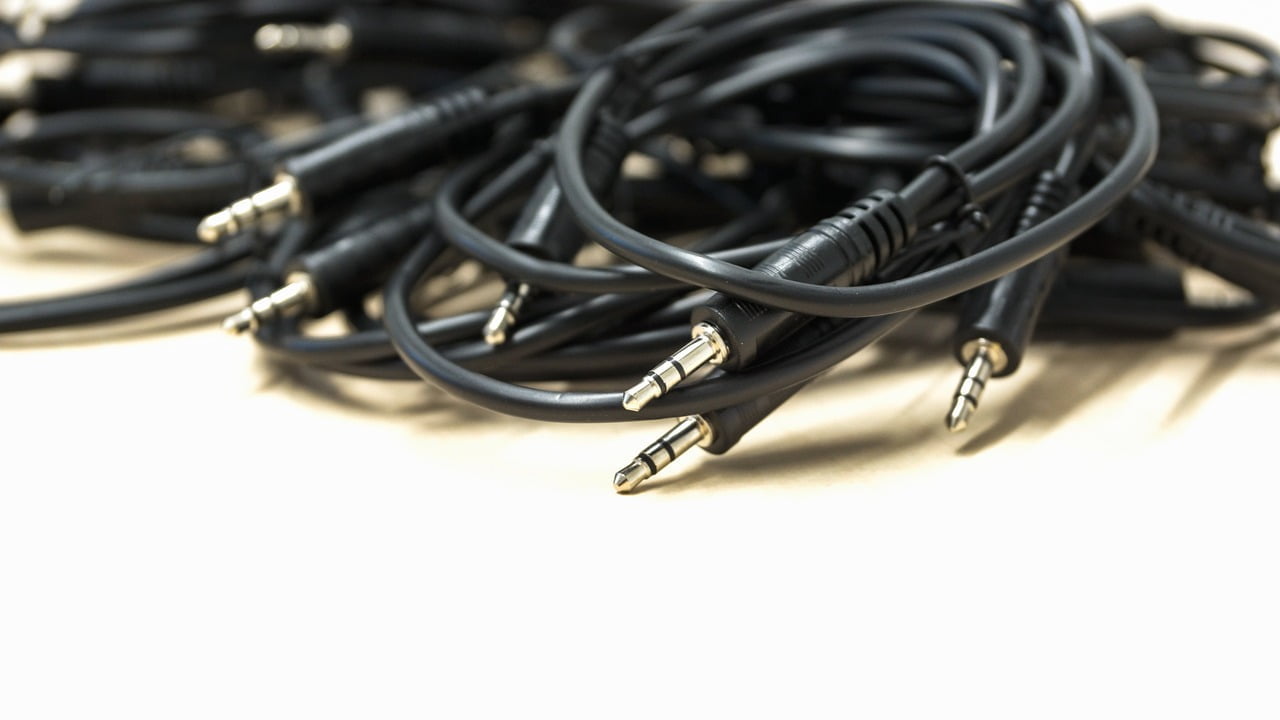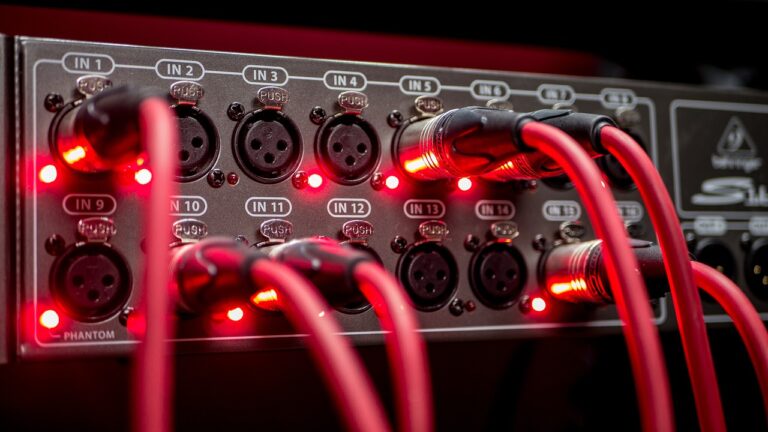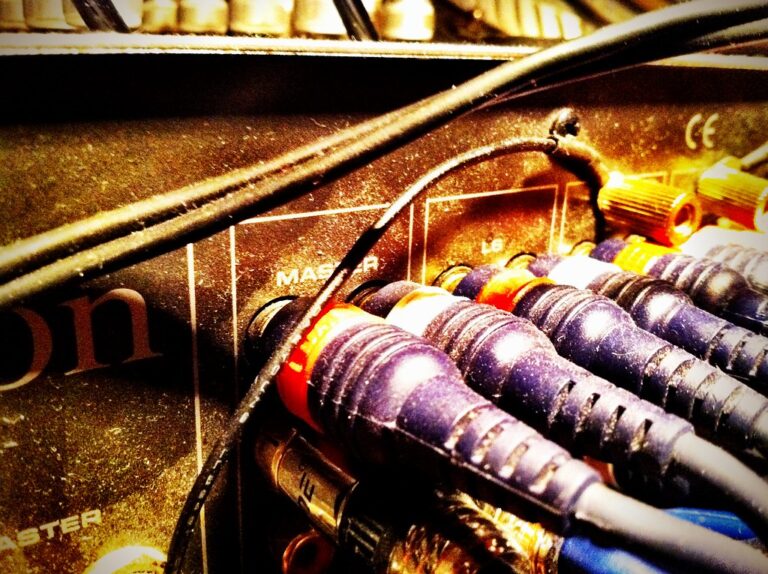Digital Audio Cables: Choosing Between Coaxial, Optical, and AES/EBU
As I ponder the intricacies of digital audio cables, the question arises: how do we truly decide between coaxial, optical, and AES/EBU? The subtle nuances in audio transmission and fidelity brought forth by each cable type beckon us to explore further. The impact on sound quality, compatibility with devices, and the intricacies of signal transmission await our consideration. Let’s uncover the layers of this intriguing subject, shall we?
We are supported by our audience. When you purchase through links on our site, we may earn an affiliate commission, at no extra cost for you. Learn more.
Key Differences Between Coaxial, Optical, AES/EBU
When evaluating digital audio cables, understanding the key differences between coaxial, optical, and AES/EBU is essential for making informed decisions based on specific audio needs and system requirements. Coaxial cables are known for their suitability for long runs but can be prone to PC noise interference. They are also susceptible to issues like ground loops, necessitating the use of noise reduction techniques to maintain sound quality. On the other hand, optical cables provide isolation and minimal jitter introduction due to their reliance on light for signal transmission. However, the sound quality of optical cables can vary depending on the materials used in their construction.
In the domain of professional audio, AES/EBU stands out as the balanced transmission version of SPDIF, capable of carrying more information. This makes AES/EBU ideal for applications where data integrity and precision are paramount. The differences in sound between coaxial, optical, and AES/EBU cables are notable. Coaxial cables may introduce more noise, particularly over long distances, impacting sound quality. In contrast, optical cables offer cleaner transmission but may exhibit variations in sound quality based on the quality of the materials utilized. AES/EBU, with its balanced transmission and enhanced data capabilities, provides a reliable option for achieving high-quality audio transmission in professional settings.
Factors Impacting Audio Quality Comparison
In evaluating digital audio cables, the distinct characteristics of different components play a substantial role in determining the overall audio quality experienced within a system. When comparing audio quality, several factors come into play:
- Source Quality: The quality of the digital signal source significantly impacts the sound produced. A high-quality source, such as a DAC or CD player, paired with the right digital cable can bring out the best in audio playback, highlighting nuances that might be lost with a lower-grade source.
- Recording Studios Standards: Professional recording studios often use top-tier digital cables to maintain the integrity of the analog audio during the digital recording process. These studios set the benchmark for the best sound quality possible, showcasing the importance of using high-quality digital cables in audio setups.
- Perceptible Differences: Careful listeners can discern differences in audio quality based on the digital cable used. Beyond generic sound variations, subtle nuances in tempo, tonality, and overall sonic attributes can be noticed, emphasizing the impact of digital cables on the final audio output.
Considering these factors is important when aiming for the best possible sound quality in your digital audio setup.
Choosing the Right Cable for Your Setup
Choosing the appropriate digital audio cable for your setup involves understanding the specific requirements and compatibility of your components to optimize audio transmission quality. When considering digital audio cables, factors such as signal integrity, interference prevention, and the type of connection needed play critical roles in determining the most suitable option. Shielded cables are essential for maintaining signal integrity in digital audio connections by reducing electromagnetic interference (EMI) and radio-frequency interference (RFI) that can degrade audio quality.
Coaxial cables are often favored over optical cables in high-quality audio setups due to their ability to minimize jitter issues and provide a stable signal transmission. Coaxial cables offer a reliable connection for digital audio signals, ensuring that the data is accurately transferred without distortion. Additionally, coaxial cables are versatile and compatible with a wide range of audio components, making them a popular choice for many audio enthusiasts.
When selecting a digital audio cable, it is critical to match the cable type with the specific requirements of your setup to achieve the best performance. By understanding the capabilities and limitations of different cable types, such as coaxial and optical cables, you can make sure that your digital audio signals are transmitted efficiently and without loss of quality.
Pros and Cons of Coaxial, Optical, AES/EBU
Coaxial cables, optical cables, and AES/EBU each present distinct advantages and limitations in digital audio transmission setups, influencing the overall performance and quality of audio signals. Here are the pros and cons of each:
- Coaxial Cables:
- Pros: Suitable for long-distance runs, offering good sound quality in pro audio setups.
- Cons: Prone to PC noise issues, may require additional measures for noise reduction, and can be affected by ground loops, impacting signal quality.
- Optical Cables:
- Pros: Provide isolation and minimal jitter introduction, commonly used in pro audio for their sound quality.
- Cons: Require careful handling for best performance, sound quality may vary depending on the material used.
- AES/EBU:
- Pros: The professional version of SPDIF, carrying more information with balanced and higher voltage transmission, commonly used in studio setups for enhanced sound quality in pro audio environments.
- Cons: Requires compatible equipment, may be less common in consumer setups.
Considering these factors, selecting the most suitable digital cable type depends on the specific requirements of the audio setup, balancing factors such as sound quality, distance, and susceptibility to interference.
Practical Considerations for Cable Selection
When considering practical aspects of selecting digital audio cables, one must carefully evaluate factors such as impedance matching and the necessity of terminating resistors for maintaining signal integrity. In the domain of digital audio transmission, impedance matching is critical to guarantee that the input and output impedances of devices are compatible. Failure to match impedances can lead to signal reflections and distortions, ultimately degrading the audio quality. Additionally, terminating resistors play an essential role in preventing signal degradation in SPDIF connections by properly terminating the transmission line to prevent signal reflections.
Studios use AES/EBU cables for professional audio applications due to their ability to transmit digital audio signals with high fidelity and reliability. When seeking the best potential audio quality, studios often opt for AES/EBU connections as they offer superior performance compared to coaxial and optical cables in certain scenarios. In situations where balanced analog connections are required, AES/EBU cables shine by providing robust noise rejection and high signal integrity.
In the context of connecting Audio DACs, selecting the appropriate cable type is paramount to achieving the best sound quality. While each type of digital audio cable has its strengths and weaknesses, studios and audiophiles typically find that AES/EBU cables sound better when aiming for the highest audio fidelity. By considering impedance matching, terminating resistors, and the specific requirements of the setup, one can ensure that the chosen digital audio cable delivers the desired audio performance.







